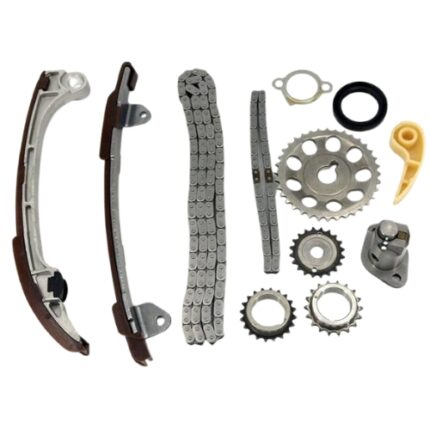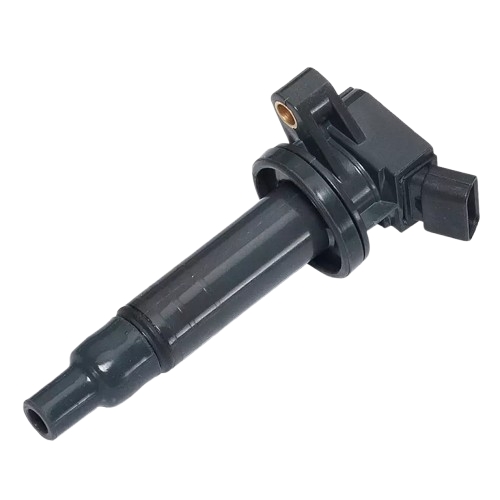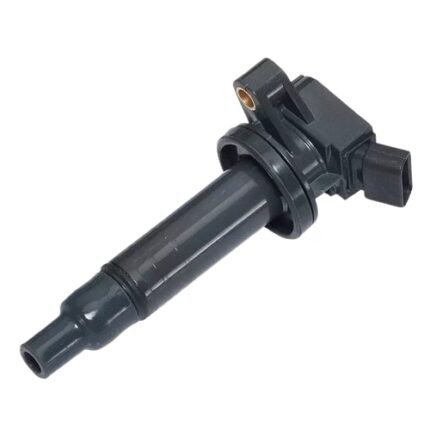-6%
Get Ignition Coil Assy For Toyota with 1KR/1ZZ/3SGE-GTE Engine 90919-02239 in Kenya
The Ignition Coil Assembly, commonly referred to as the Ignition Coil Assy, is a fundamental component of the modern internal combustion engine’s ignition system. It serves a critical function by converting low-voltage electrical energy from the vehicle’s battery into the high-voltage current necessary to ignite the air-fuel mixture inside the engine’s combustion chambers.
This high-voltage surge is delivered to the spark plugs at precisely timed intervals, ensuring controlled and efficient combustion. The quality, reliability, and performance of the ignition coil directly impact engine start-up, fuel efficiency, emissions output, and overall drivability.
Function and Operating Principle
At its core, the ignition coil operates as a step-up transformer. It receives a 12-volt input (or slightly less) from the vehicle’s electrical system and amplifies this to tens of thousands of volts — typically in the range of 20,000 to 60,000 volts, depending on the design and performance requirements of the engine.
The basic operating principle relies on electromagnetic induction:
-
Primary Winding Activation: When the ignition switch is turned on, electrical current flows through the primary winding of the ignition coil. This winding consists of a relatively small number of turns of heavy-gauge copper wire.
-
Magnetic Field Generation: As current flows, a magnetic field builds around the coil.
-
Current Interruption: When the engine’s control module (ECU or ignition module) cuts off the current, the collapsing magnetic field induces a very high voltage in the secondary winding, which consists of thousands of turns of fine wire.
-
Voltage Transfer: This high voltage is directed to the appropriate spark plug, where it jumps the electrode gap and ignites the compressed air-fuel mixture.
Construction and Materials
An ignition coil assembly is made of several key components designed to endure extreme temperature, vibration, and voltage environments. These include:
-
Primary and Secondary Coils: Copper windings designed for optimal conductivity and durability.
-
Iron Core: Enhances magnetic field strength and energy transfer efficiency.
-
High-Voltage Terminal: Connects the coil to the spark plug (either directly or via high-tension leads).
-
Housing and Insulation: Typically made from epoxy resin, thermoplastic, or high-grade composite materials that resist heat, moisture, and engine contaminants.
-
Connector Plug: Interface with the vehicle’s wiring harness for electrical control signals and grounding.
The assembly is hermetically sealed to protect internal components from oil, dust, engine heat, and vibration, ensuring long service life and consistent performance.
Types of Ignition Coil Assemblies
There are several types of ignition coil assemblies, each suited for different engine designs and configurations:
-
Conventional Coil (Single Coil)
An older design where one ignition coil serves all cylinders. The high-voltage output is distributed to each spark plug via a mechanical or electronic distributor. -
Distributorless Ignition System (DIS) Coils
Used in systems where each coil fires one or two cylinders. Typically found in wasted spark systems, where one coil serves two spark plugs firing simultaneously. -
Coil-on-Plug (COP)
The most common modern design. Each spark plug has its own dedicated ignition coil mounted directly above it, reducing energy loss and eliminating the need for spark plug wires. -
Coil-Near-Plug (CNP)
Similar to COP, but the coil is located near rather than directly on the plug. A short high-tension lead connects the coil to the spark plug.
Each type is designed for specific ignition timing, power output, and installation configurations, depending on the vehicle’s engine architecture.
Performance Characteristics
An effective ignition coil must meet several stringent performance criteria:
-
Voltage Output: Capable of generating the necessary high voltage to create a spark across the spark plug gap, regardless of engine load or RPM.
-
Fast Rise Time: The voltage must rise quickly enough to produce a consistent and timely spark for combustion.
-
Thermal Resistance: Coils must withstand the high-temperature environment of the engine bay, often exceeding 150°C during peak operation.
-
Dielectric Strength: The insulation must prevent internal or external voltage leaks that could disrupt ignition.
-
Longevity: Must maintain performance over tens of thousands of ignition cycles, ideally with no performance degradation.
Installation Considerations
When installing an ignition coil assembly, proper attention must be paid to:
-
Mounting Position: Ensures optimal alignment with spark plugs (in COP systems) and secure electrical contact.
-
Torque Specifications: Prevents physical damage to the housing and internal coil windings.
-
Connector Fitment: Ensures clean, corrosion-free electrical contact.
-
Dielectric Grease Use: Applied to terminals to resist moisture intrusion and arcing.
Improper installation can lead to misfires, voltage loss, or coil overheating, which can severely impact engine performance or cause permanent damage.
Symptoms of Ignition Coil Failure
Ignition coil assemblies are subject to wear and environmental stress. Over time, degradation may occur due to:
-
Internal short circuits
-
Breakdown of insulation
-
Moisture ingress
-
Vibration-induced wire fatigue
Common failure symptoms include:
-
Engine misfires
-
Rough idling
-
Poor acceleration
-
Increased fuel consumption
-
Difficulty starting
-
Illuminated check engine light
-
Diagnostic trouble codes (e.g., P0350-P0362 series)
If left unaddressed, coil failure can lead to raw fuel entering the exhaust system, damaging catalytic converters or oxygen sensors.
Diagnostic Methods
To identify a faulty ignition coil:
-
OBD-II Scan: Read trouble codes related to ignition performance.
-
Spark Test: Observe spark plug output manually or using a test light.
-
Coil Resistance Check: Measure primary and secondary coil resistance with a multimeter and compare with manufacturer specifications.
-
Oscilloscope: Observe coil waveforms to evaluate proper voltage rise and fall.
Routine diagnostic checks can prevent progressive damage and maintain engine health.
Service Life and Maintenance
Ignition coil assemblies are typically maintenance-free components but should be inspected during routine tune-ups or spark plug replacement intervals. While they are designed to last anywhere from 80,000 to 160,000 kilometers, environmental factors like heat, moisture, and electrical surges can shorten their lifespan.
Using compatible spark plugs, maintaining clean electrical connections, and avoiding exposure to engine oil leaks or coolant spillage can extend the coil’s service life significantly.
Follow us on Facebook for more parts.





Reviews
Clear filtersThere are no reviews yet.